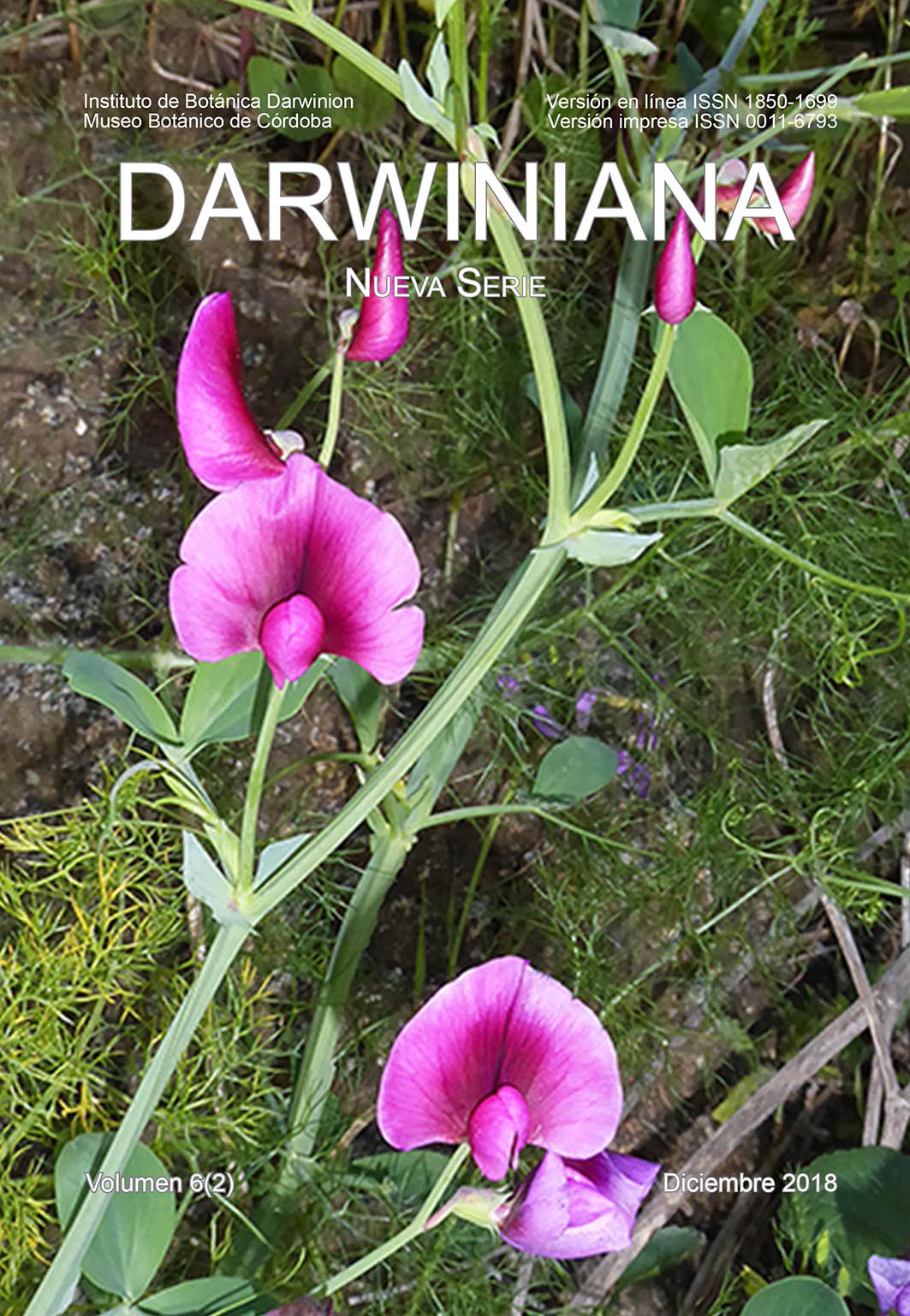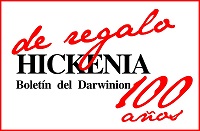Diversidad fúngica en Argentina, análisis bibliométrico de los aportes realizados y su relación con el Convenio de Diversidad Biológica
DOI:
https://doi.org/10.14522/darwiniana.2018.62.781Palabras clave:
Argentina, CDB, diversidad fúngicaResumen
La República Argentina ha ratificado, en el año 1994, mediante la ley 24.375, el Convenio de Diversidad Biológica (CDB), haciéndose partícipe de las preocupaciones globales acerca de la diversidad biológica y de la necesidad de implementación de acciones dirigidas a su conservación. Con el objetivo de analizar el comportamiento de la producción científica en relación a la diversidad fúngica en el contexto previo y posterior al CDB se llevó adelante un estudio bibliométrico, evaluando la producción científica nacional que involucre estudios de diversidad fúngica argentina entre los períodos 1978-1994 y 2000-2016. Se utilizaron 314 publicaciones en revistas nacionales e internacionales, seleccionadas como indicadores de la historicidad de los aportes a esta temática y analizando la red de colaboración interinstitucional nacional e internacional a partir de las publicaciones evaluadas. Los resultados indican una tendencia exponencial en la producción de conocimiento en diversidad fúngica nativa y muestran importantes redes de colaboración entre institutos a nivel nacional e internacional. Los datos sugieren una tendencia hacia la descentralización de los recursos humanos y a su desarrollo a escala regional. La ratificación del CDB y el Protocolo de Nagoya en Argentina ha promovido diversos cambios en los marcos normativos; sin embargo, no es claro su impacto en el ámbito científico-tecnológico. Los cambios a nivel nacional, como la creación del Ministerio de Ciencia, Técnica e Innovación Productiva de la Nación, parecen haber promovido en mayor grado el conocimiento de la diversidad fúngica de nuestro país y por ende en su conservación, comparado a aquellos generados en acuerdos multilaterales a nivel internacional.
Citas
Argentina. Ministerio de Ciencia, Tecnología e Innovación Productiva (MINCYT). 2012. Plan Nacional de Ciencia, Tecnología e Innovación: Argentina Innovadora 2020. Disponible en: http://www.mincyt.gob.ar/adjuntos/archivos/000/022/0000022576.pdf
Borgatti, S.P. 2002. NetDraw Software for Network Visualization.Analytic Technologies: Lexington, KY, USA.
Gamundi, I., J. Godeas, A. M. & Cabello, N.M. 2017. La investigación micológica en la Argentina: Período 1978-2016. Darwiniana, nueva serie 5: 98-108. DOI: 10.14522/darwiniana.2017.51.711
Google Earth. US Dept of StateGeographer. ©2018 Google. ImageLandsat/Copernicus. Data SIO, NOAA, US. Navy, NGA, GEBCO.
Ley N° 24.375. Boletín Oficial de la República Argentina, Buenos Aires, Argentina, 6 de octubre de
Disponible en: http://servicios.infoleg.gob.ar/infolegInternet/anexos/25000-29999/29276/norma.htm
Li, T., Ho, Y.S.; Li, C.Y. 2008. Bibliometric analysis on global Parkinson’s disease research trends during 1991–2006. Neuroscience Letters 441: 248-252
Liu, X.J.; Zhang, L. & Hong, S. 2011. Global biodiversity research during 1900-2009: a bibliometric analysis. Biodiversity and conservation 20: 807-826
Pritchard, A. 1969. Statistical Bibliography or Bibliometrics?.Journal of Documentation 25: 348-349.
UNEP. Programa de Naciones Unidas para el Medio Ambiente. 1992. Convenio sobre la Diversidad
Biológica. Disponible en: http://www.un.org/es/events/biodiversityday/convention.shtml
Silvestri, L. C. 2015. La conservación de la diversidad genética argentina: tres desafíos para implementar el régimen de acceso a los recursos genéticos y la distribución de los beneficios. Ecología austral, 25(3), 273-278
Xie, S.; Zhang, J.; Ho, Y.S. 2008. Assessment of world aerosol research trends by bibliometric analysis. Scientometrics 77: 113-1
Publicado
Cómo citar
Número
Sección
Licencia

A partir de 2012, esta obra está licenciada bajo una Licencia Creative Commons Atribución-NoComercial 2.5 Argentina .
Cualquier obra derivada deberá estar previamente autorizada con nota escrita de los editores.







